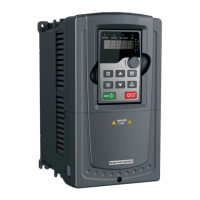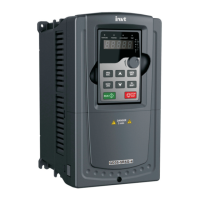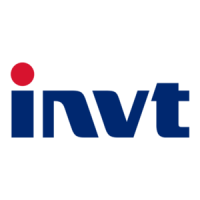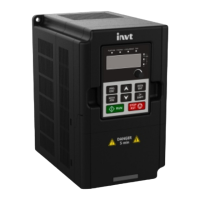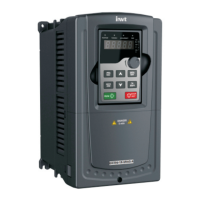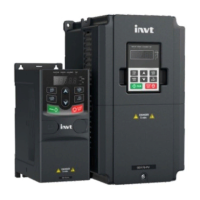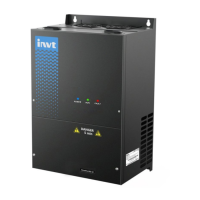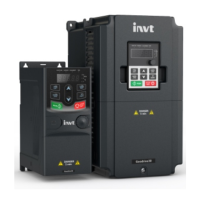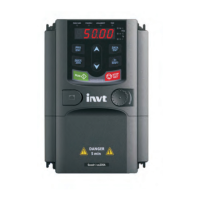
Do you have a question about the INVT Goodrive 200A and is the answer not in the manual?
| Protection Level | IP20 |
|---|---|
| Overload Capacity | 150% for 60 seconds, 180% for 10 seconds |
| Cooling Method | Forced air cooling |
| Storage Temperature | -20°C to +60°C |
| Output Voltage | 0V-Input Voltage |
| Power | Varies with model |
| Control Mode | V/F control |
| Frequency Range | 0~600Hz |
| Operating Temperature | -10°C to +50°C |
| Braking | Built-in braking unit |
| Communication | RS485 |
| Protection Features | Overcurrent, Overvoltage, Undervoltage, Overheat, Short circuit |
| Humidity | 5% - 95% RH, non-condensing |
| Altitude | Below 1000m (derating required above 1000m) |
| Output Current | Varies by model |
| Power Range | 0.75kW - 630kW |
Defines safety terms like Danger and Warning, and explains warning symbols used in the manual.
Lists essential safety rules for operating, installing, and maintaining the inverter.
Details safety precautions for installation, commissioning, maintenance, and component replacement.
Initial product inspection, checking package integrity, and confirming application suitability.
Specifies crucial environmental conditions for inverter installation and operation.
Covers post-installation checks and fundamental commissioning steps before utilization.
Explains the inverter's operational principles and lists key technical specifications.
Details name plate information, type designation, and rated electrical specifications.
Illustrates the inverter's physical structure and component layout through diagrams.
Defines the required ambient and site conditions for proper mechanical installation.
Specifies inverter orientation (upright) and mounting methods (wall, flange, floor).
Provides essential wiring diagrams for main and control circuits, including terminal layouts.
Details measures for protecting the inverter and cables against short circuits and overload.
Describes the inverter's keypad layout, indicator LEDs, and display information.
Explains how to navigate menus and modify function codes using the keypad interface.
Covers setting inverter password protection and monitoring operational states via keypad.
Introduces the structure, grouping, and modification rules for function parameters.
Details parameters for basic functions, motor settings, control modes, I/O, and HMI.
Covers advanced functions, PID control, protection, communication, and reserved parameters.
Details Ethernet, monitoring, water supply, and other specific parameter groups.
Step-by-step guide for initial inverter power-on, checks, and initialization.
Explains key control modes like Vector Control, Torque Control, and operation sequences.
Details methods for setting operating frequency and configuring motor parameters.
Describes PID control, Simple PLC, and multi-step speed running for advanced operation.
Explains how to identify, interpret, and reset inverter alarms and faults.
Provides a comprehensive table of fault codes, possible causes, and corrective actions.
Diagnostic flowcharts for troubleshooting common inverter and motor issues.
Routine maintenance checks and hardware diagnostics for inverter components.
Introduction to MODBUS protocol and its application for inverter communication.
Details RTU frame structure, command codes, and data illustration for communication.
Explains parameter address mapping and provides practical communication examples.
Specifies inverter capacity, ratings, and derating factors (temperature, altitude, frequency).
Details power network requirements, motor data, and EMC compatibility guidelines.
Lists applicable industry standards and CE conformity requirements for the inverter.
Provides dimensional drawings and installation details for the inverter keypad.
Presents dimension charts for wall, flange, and floor mounting configurations.
Illustrates peripheral wiring and describes essential components like cables and breakers.
Covers cable specifications, reactor options, and filter selection tables.
Details guidance for selecting and installing braking system components like resistors and units.
Lists optional accessories such as mounting brackets, covers, and keypads.
Provides contact information for product inquiries and manual feedback.
Directs users to the INVT website for accessing product manuals and documentation.

